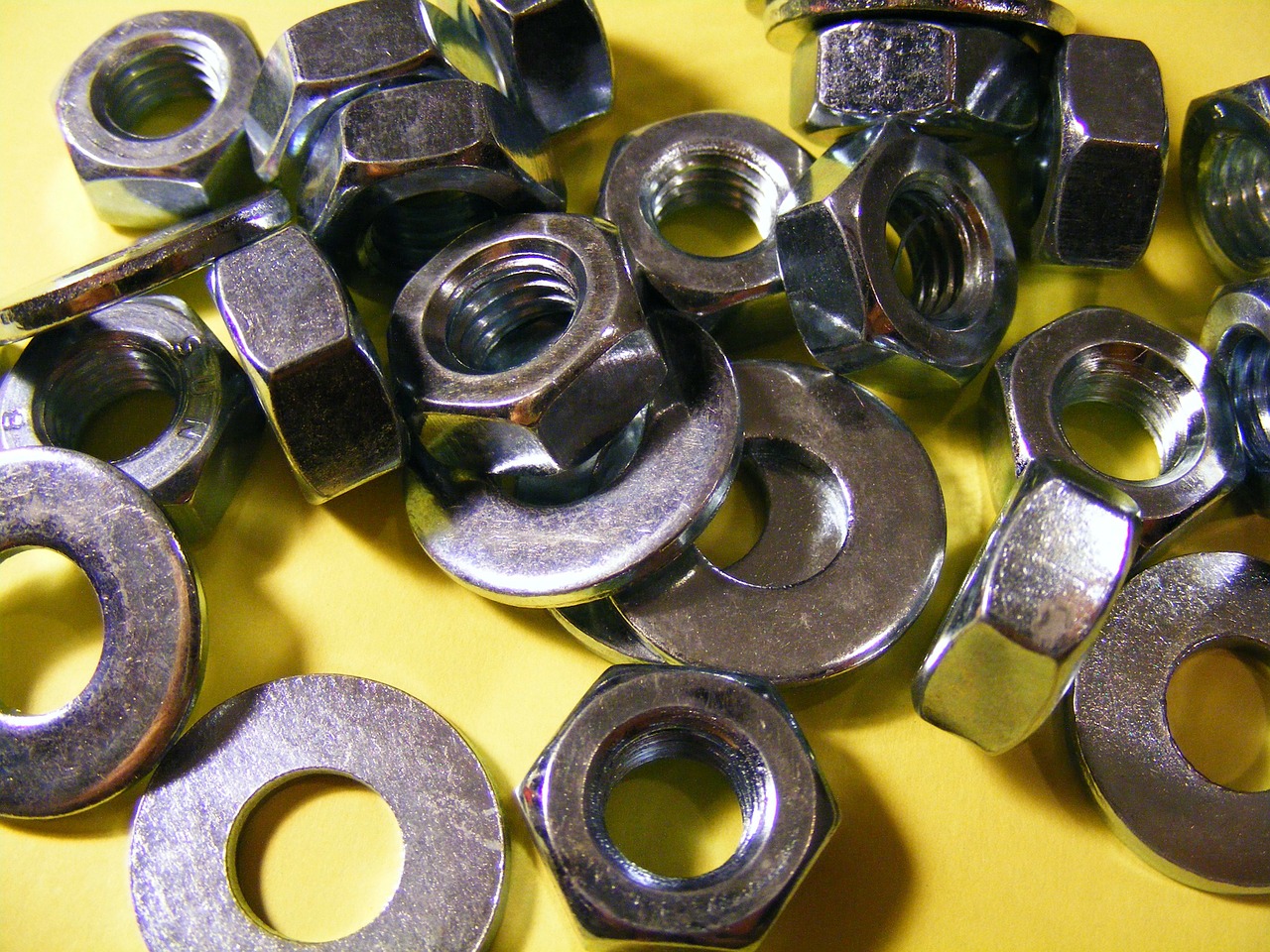
CCO Creative Commons Torre Eiffel, Parigi

dopo aver parlato a lungo dell’evoluzione del calcestruzzo e delle sue varie tecnologie di impiego, è giunto il momento di parlare di nuovi materiali, anch’essi di fondamentale importanza per il progresso nell’ambito delle costruzioni e dell’architettura: signori lettori da oggi si parla di materiali metallici.
I metalli, come tutti gli altri materiali di cui abbiamo parlato finora, hanno trovato applicazione nel mondo dell’architettura, e in particolare dell’edilizia, sin dai tempi antichi. Vedremo, in questa serie di articoli, qual è la storia e l’evoluzione che questi materiali hanno avuto e come essi vengono impiegati tutt’oggi.
Prima di andare oltre, però, ho bisogno di fare una piccola premessa: come sapete, se c’è un obiettivo che ho sempre cercato di raggiungere con questo mio modesto lavoro è quello di offrire una lettura che fosse di facile, oltre che gradevole, comprensione anche a chi si fosse approcciato per la prima volta a tali argomenti.
Pertanto, prima di entrare nel merito dei materiali metallici, mi sembra giusto dedicare qualche riga ai materiali in senso più generale, per capire meglio cosa sono, come si classificano, come si scelgono e così via… ma andiamo a scoprirlo!

A PROPOSITO DEI MATERIALI
Quando si parla di materiale, si intende qualsiasi sostanza, sia essa allo stato liquido, solido o gassoso, che viene impiegata dall’uomo per svolgere determinate funzioni. Infatti, alla base della realizzazione di opere di ingegneria o di architettura, siano esse infrastrutture, veicoli o ancora oggetti d’uso più o meno comune come i computer, vi è una approfondita conoscenza dei materiali, così da poter scegliere il migliore per quella determinata funzione.
La disciplina che se ne occupa, attraverso degli studi sulle relazioni tra la composizione e struttura del materiale stesso, sul trattamento che questi subisce con le sue proprietà, col fine di poterne individuare la migliore utilizzazione, anche in funzione delle differenti condizioni ambientali, prende il nome di scienza e tecnologia dei materiali.
- Classificazione e acquisizione
Nell’ambito dell’architettura e dell’ingegneria civile, a parte l’acqua che viene considerato un materiale unico per la sua importanza, i materiali sono solidi a temperatura ordinaria. Volendo fare una classificazione, i materiali possono essere così suddivisi:
-materiali metallici, su cui ci soffermeremo, intendendo sia l’elemento metallo che le sue leghe. Dotati di notevole stabilità dimensionale, vengono detti materiali strutturali primari. Le loro peculiarità sono la buona conduzione di calore ed elettricità, opacità alla luce, lucentezza metallica, durezza, duttilità, malleabilità e, dunque, lavorabilità per deformazione plastica;
-materiali ceramici, ovvero i materiali costituenti le rocce o i minerali delle argille. La loro caratteristica principale è la fragilità, ma in generale sono dotati di durezza elevata, resistenza alle alte temperature (ossia refrattari), non conducono né corrente elettrica né calore, non si corrodono facilmente e sono poco riflettenti. Esempi di materiali di questo tipo sono i materiali oggetto delle mie precedenti trattazioni come la pietra, i mattoni e il calcestruzzo, ma anche sabbia, fibre di vetro, gesso, grafite e così via;
-materiali organici, che comprendono i polimeri, cioè sostanze dall’elevato peso molecolare, e gli elastomeri, cioè sostane naturali o sintetiche la cui peculiarità è la capacità di subire grosse deformazioni elastiche. Rientrano in questa categoria anche la carta, gli adesivi, i combustibili, i lubrificanti, i refrigeranti, le pitture e vernici, solventi e detergenti ma anche cibi e medicine. Nello specifico ambito d’interesse dell’ingegneria e dell’architettura, nel quale hanno avuto grande sviluppo in questo secolo, materiali di questo tipo sono il legno, la lana, ecc. Le caratteristiche tecniche sono basso peso specifico, bassa conducibilità di calore ed elettricità, scarsa resistenza alle alte temperature, combustibilità, duttilità, bassissima stabilità dimensionale.
Prima di essere impiegati dall’uomo, i materiali subiscono dei processi di ottenimento del materiale stesso: dall’estrazione delle rocce, minerali e petrolio, all’abbattimento delle foreste da cui si acquisiscono, appunto, le materie prime. Lo step successivo, per mezzo di opportuni processi, è quello di trasformarle chimicamente e modificarle per ricavare i materiali da utilizzare.
- Criteri di scelta
La scelta del materiale, però, non è un passo semplice, anzi, è forse il passaggio più difficile della catena, e per il quale serve uno studio lungo, approfondito e costoso. Sono diversi i fattori che influiscono sulla scelta di un materiale piuttosto che un altro: per prima cosa ci si aspetta che il materiale, una volta messo in opera, abbia una lunga vita e questo si traduce, fra le altre cose, in resistenza meccanica, stabilità dimensionale, durezza, resistenza alle temperature e alla corrosione, ecc.
Un altro fattore può essere legato alla possibilità di dare una forma ben precisa al materiale e di unirlo ad altri, e questo comporta che si abbiano caratteristiche di lavorabilità, a caldo e a freddo, ma anche duttilità, fusibilità, saldabilità e così via. In fine un aspetto fondamentale, fra i criteri di scelta di un materiale, è certamente l’economia: bisogna infatti puntare alla produzione dei beni al costo più basso. Ma la variabile che influenza maggiormente i costi non è di natura tecnica: sappiamo, infatti, che la legge del mercato dice che qualsiasi cosa che non può essere consumata e venduta in grandi quantità non può essere prodotta a basso costo.
- Il ciclo dei materiali
In ultima analisi, voglio accennare a cosa succede dopo l’uso di un materiale. Una volta compiuto il proprio ciclo vitale, i materiali divengono rifiuti ed è importante che non vengano abbandonati, bensì ulteriormente trasformati, così da poter essere riutilizzati diminuendo, in questo modo, il fabbisogno delle materie prime nonché la massa di rifiuti. Nell’intero ciclo appena descritto gioca un ruolo fondamentale l’energia, infatti ogni stadio produce e consuma quantità di energia. Per questo motivo il rapporto ambiente-materiali diventa estremamente importante e delicato, ed è per questo che scienza e tecnologia si interfacciano chiudendo o aprendo a nuove soluzioni, nuovi materiali, con conseguenti nuove applicazioni, diversi consumi e nuovi bisogni.

Bene miei cari lettori, per oggi ho concluso. Ho ritenuto importante fornire queste nozioni di carattere generale perché credo che questo favorisca una migliore comprensione di quanto abbiamo trattato fino ad ora e di quanto tratteremo di qui in avanti. Ovviamente io, come al solito ma mai in maniera scontata o superficiale, vi ringrazio per avermi letto e spero abbiate piacere di proseguire quest’avventura con me e con i materiali dell’architettura. Vi abbraccio tutti!
L'Ego dice: "Quando ogni cosa andrà a posto troverò la pace".
Lo Spirito dice: "Trova la pace e ogni cosa andrà a posto".

CCO Creative Commons Esempio di materiali metallici

after having spoken at length about the evolution of concrete and its various technologies of use, it is time to talk about new materials, also of fundamental importance for progress in the field of construction and architecture: gentlemen readers from today we talk about metallic materials.
Metals, like all the other materials we have discussed so far, have found application in the world of architecture, and in particular building, since ancient times. We will see, in this series of articles, what is the history and the evolution that these materials have had and how they are used today.
Before going further, however, I need to make a small premise: as you know, if there is a goal that I have always tried to achieve with this my modest job is to offer a reading that was easy, as well as pleasant, understanding also to those who had approached these topics for the first time.
Therefore, before entering into the merits of metallic materials, it seems right to devote a few lines to the materials in a more general sense, to better understand what they are, how they are classified, how they are chosen and so on... but let's find out!

ABOUT THE MATERIALS
When we talk about material, we mean any substance, whether liquid, solid or gaseous, which is used by man to perform certain functions. In fact, at the base of the realization of engineering or architectural works, whether they are infrastructures, vehicles or more or less common objects such as computers, there is a deep knowledge of the materials, in order to choose the best one for the determined one function.
The discipline that deals with it, through studies on the relationship between the composition and structure of the material itself, on the treatment that it undergoes with its properties, with the aim of identifying the best use, also according to the different environmental conditions, takes the name of science and technology of materials.
- Classification and acquisition
In the field of architecture and civil engineering, apart from the water that is considered a unique material for its importance, the materials are solid at ordinary temperature. If you want to make a classification, the materials can be divided as follows:
-metallic materials, on which we will dwell, meaning both the metal element and its alloys. Equipped with considerable dimensional stability, are called primary structural materials. Their peculiarities are the good conduction of heat and electricity, light opacity, metallic shine, hardness, ductility, malleability and, therefore, workability due to plastic deformation;
-ceramic materials, or materials constituting the rocks or minerals of clays. Their main characteristic is fragility, but in general they are equipped with high hardness, resistance to high temperatures (ie refractory), do not conduct electricity or heat, do not corrode easily and are not very reflective. Examples of materials of this type are the materials covered by my previous treatises such as stone, bricks and concrete, but also sand, glass fibers, gypsum, graphite and so on;
-organic materials, which comprise the polymers, ie substances having a high molecular weight, and the elastomers, i.e. natural or synthetic substances whose peculiarity is the ability to undergo large elastic deformations. This category also includes paper, adhesives, fuels, lubricants, refrigerants, paints and varnishes, solvents and detergents, as well as foods and medicines. In the specific field of interest of engineering and architecture, in which they have had great development in this century, materials of this type are wood, wool, etc. The technical features are low specific weight, low heat and heat conductivity, low resistance to high temperatures, combustibility, ductility, very low dimensional stability.
Before being used by man, the materials undergo the processes of obtaining the material itself: from the extraction of rocks, minerals and oil, to the destruction of the forests from which the raw materials are acquired. . The next step, by means of appropriate processes, is to chemically transform them and modify them to obtain the materials to be used.
- Selection criteria
The choice of the material, however, is not a simple step, on the contrary, it is perhaps the most difficult passage in the chain, and for which a long, in-depth and expensive study is needed. There are several factors that influence the choice of one material rather than another: firstly it is expected that the material, once put in place, has a long life and this translates, among other things, into mechanical resistance, dimensional stability, hardness, resistance to temperatures and corrosion, etc.
Another factor can be linked to the possibility of giving a precise shape to the material and to joining it to others, and this means that there are characteristics of workability, hot and cold, but also ductility, fusibility, weldability and so on. Finally, a fundamental aspect, among the criteria for choosing a material, is certainly the economy: in fact, it is necessary to aim at the production of goods at the lowest cost. But the variable that most influences costs is not technical: we know, in fact, that the law of the market says that anything that can not be consumed and sold in large quantities can not be produced at low cost.
- The cycle of materials
Ultimately, I want to mention what happens after the use of a material. Once the life cycle is complete, the materials become waste and it is important that they are not abandoned, but further processed, so that they can be re-used, thus reducing the need for raw materials and the mass of waste. In the whole cycle just described, the energy plays a fundamental role. In fact, each stage produces and consumes energy. For this reason the relationship between environment and materials becomes extremely important and delicate, and that is why science and technology interface with closing or opening new solutions, new materials, with consequent new applications, different consumption and new needs.

Well my dear readers, for today I have concluded. I considered it important to provide these general notions because I believe that this favors a better understanding of what we have been dealing with up to now and what we will discuss here. Obviously, as usual, but never in a predictable or superficial way, I thank you for reading and I hope you will enjoy this adventure with me and with the materials of architecture. I embrace you all!
The ego says: "When everything goes right I will find peace"
The Spirit says: "Find peace and everything will fall into place"

CCO Creative Commons Riciclaggio carta e cartone
Le mie fonti…
-Appunti delle lezioni e dei seminari universitari.
-Edward Allen , I fondamenti del costruire: i materiali, le tecniche, i metodi, McGraw-Hill
-Bernardo Marchese, Tecnologia dei materiali e chimica applicata, Liguori Editore